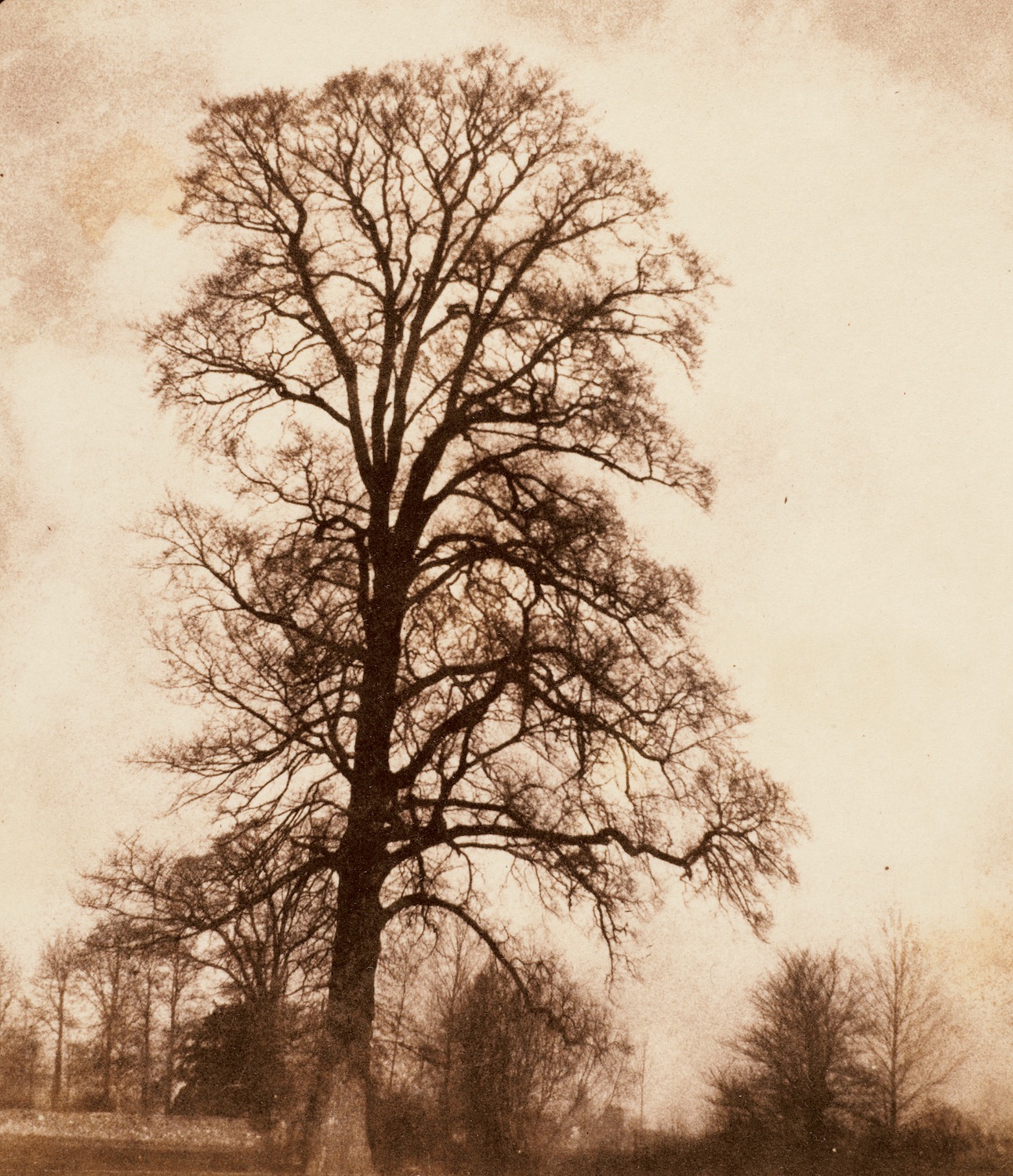Ahead of Salt and Silver, Early Photography 1840 - 60, Carol Jacobi discusses the history and aesthetics of salted paper prints.
Salted paper prints are looked at differently in England. Abroad, they are appreciated as a distinct photographic form. Here, their English inventor, William Henry Fox Talbot (1800-1877), and many fellow pioneers are famed primarily as early photographers and salt prints are framed as early photographs. Salt and Silver: Early Photography 1840-1860, which I am curating at Tate Britain with Simon Baker, in collaboration with the Wilson Centre for Photography, is the first exhibition in this country to focus on the medium. The scope of Michael and Jenny Wilson’s singular collection combines with the gallery context to foreground the special aesthetic properties of salt prints, a soft, papery chiaroscuro distinct from their contemporary, the shiny daguerreotype, or their sharper successors, albumen or platinum prints.
English salt prints are viewed as Victorian, and like other Victorian art they are sometimes sequestered from their international context; an eccentricity given that in the nineteenth century, industrial and imperial England was nothing if not connected to the world. In fact, Fox Talbot’s ‘photogenic drawing’ was quickly taken up in Scotland, Wales and France and, during the few years that it flourished, photographers exchanged techniques and ideas all around the globe. Salt and Silver celebrates this sudden cosmopolitan aspect of the salt print with an international display, including well-known masters such as the French photographer Félix Nadar (1820-1910) as well as less familiar figures such as the Mexican Ignacio Gavino Rocha (1832-?).
The photographs readily reward the aesthetic perspective of the exhibition and the ninety works present an array of pictorial experiment and invention. One of the earliest I have been looking at is William Henry Fox Talbot’s Great Elm at Lacock, 1843–5, a salted paper print from a salted paper negative. It was one of a series addressing Talbot’s ‘doubts and difficulties’ with photographing landscape. He had discovered by photographing coloured china and glass that green acted more slowly on his light sensitive paper than other colours and that foliage therefore appeared dim, especially against a blue sky, because blue acted quickly. The negative of Great Elm at Lacock was made in the winter when green foliage was absent and the bare silhouette was clearest.
The smudges in the sky are areas that have become over-exposed so that the action of the light has begun to reverse the darkening of the chemicals on the negative, creating lighter areas which appear darker on the positive. Later, photographers would expose for the landscape only and simply mask out the sky on the negative with dark pigment, painted up to the edges of buildings and trees. This allowed them to create the dramatic compositions cut out against pale backdrops that feature throughout the exhibition. Talbot’s untouched negative, however, records the incalculable complexity of the transition between branches and air.
The action of the breeze on the thinner boughs of the elm has caused less blurring in the picture because Talbot’s exposure time was only a minute. A few months before, he had discovered a way of chemically enhancing a ‘latent’ image on a negative that had only been exposed for a short time and not yet visibly darkened the silver salts in the paper. The full image magically swam into view only when the negative was washed in the chemical solution, looking forward to photography’s relationship with anti-natural as well as natural effects in the later nineteenth century and after.
Here, Talbot valued the photograph’s capacity to trace natural detail better than hand-drawing. This was not simply a way of reproducing; however, it was also a way of seeing. His lens looked at the landscape differently, like a portrait in fact, isolating the tree. The startlingly centred composition celebrates an asymmetrical rather than a more conventionally balanced aesthetic, the intricate irregularity of branches traced against sky. Friends to whom Talbot sent copies of his picture immediately appreciated its new beauty ‘the topmost twigs that look up at the sky’ are given with considerable … picturesque effect’, wrote the scientist Robert Hunt. Hunt was an enthusiast for natural theology and thinking of god in nature, but the disquieting art of the contingent would of course become intrinsic to photography.
The portrait-like format reflected a way of feeling as well as a way of seeing. Based in Talbot’s attachment to his inherited estate around Lacock Abbey. In the years preceding the photograph, elms in particular had been decimated by storms and letters by family and friends sadly described the loss of grand old trees. Where many photographs suggest transience, The Great Elm at Lacock declares permanence, its lop-sided profile evidence of the storms that it had defied.
The ease with which paper prints could be sent to other photographers such as Hunt facilitated the fast spread, and more importantly, the fast refinements of the method; two of which, the development of glass collodion negatives and albumen-coated paper positives, superseded it within a generation. This reproducibility would, nonetheless, remain the defining trait of photography. As Simon Baker remarks in his introduction to the book accompanying the exhibition, ‘much of what we see in photography today, both in colour and black and white, can be traced back directly to the experimental practice of Talbot and his first followers… it is a salutary lesson to keep one eye on the past in any consideration of photography’s present.’
Carol Jacobi is Curator of British Art, 1850-1915.
Salt and Silver: Early Photography 1840-60 opens at Tate Britain on 25 February and runs until 7 June 2015

